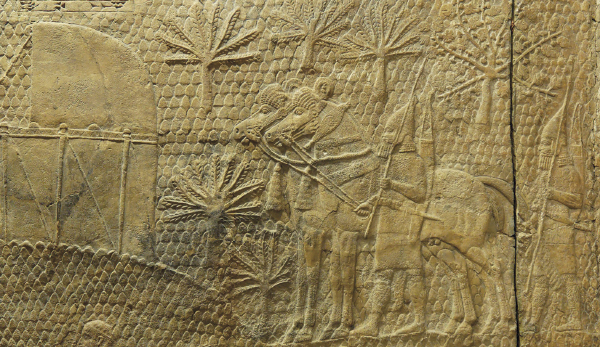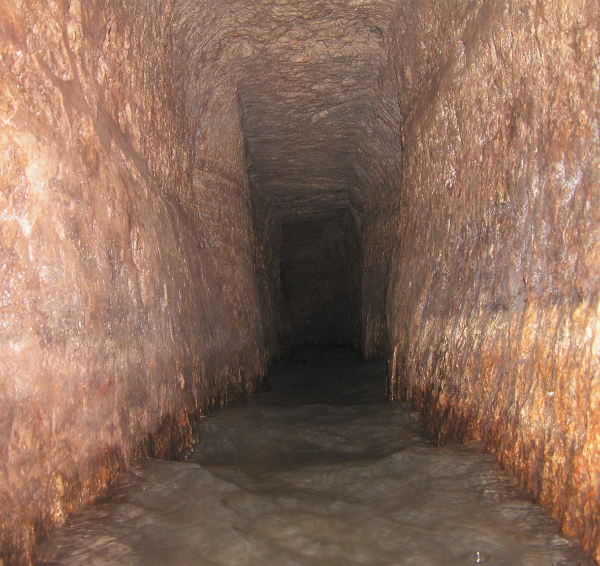Oracle against Jerusalem (22:1–25)
Gone up on the roofs (22:1). House roofs were accessible to the inhabitants, at times serving as an area for sleeping and living. They were also used as places of worship, especially of pagan deities. Sacrifices on roofs were also known in Ugarit. King Keret, having lost his family, prayed for more children and was told to sacrifice: “Climb to the summit of the tower. . . . The Keret must descend from the rooftops.”628 Special Akkadian rituals also took place on the roof, as “with the preparation you daub the roof, the loft rooms (on the roof), the windows.”629 This present passage may indicate that Israel is turning to other gods in thanks for their perceived deliverance, which in fact is not going to happen.
O town full of commotion (22:2). When Sargon died in 705 B.C., many of the Assyrian vassals in the west revolted, Israel’s king Hezekiah among them. He moved also against other of his opponents such as the Philistines and sought to strengthen his own defenses. But when Sargon’s successor, Sennacherib, attacked him in 701, those defenses were not the determinative factor (see 2 Kings 19:34–36).
Sennacherib’s armies were able to take much of Judah according to Isaiah 36:21–37:38 and Sennacherib’s own records: “Hezekiah the Judean, who did not submit to my yoke, 46 of his strong, fortified cities and the innumerable towns surrounding them . . . I besieged and I conquered.”630 He claims to have besieged Jerusalem, but he does not say it fell to him. This reflects the biblical picture that shows Hezekiah being spared the humiliation of his capital falling to the enemy.
Palace of the Forest (22:8). Solomon built this armory/storehouse in 1 Kings 7, so named because of its extensive use of cedar from Lebanon. King Mesha of Moab also claims to have built “the walls of the forests,”631 which probably refers to the material of the wall, or more likely a small copse of trees associated with it.632
Put on sackcloth (22:12). Sackcloth is a coarse, black goat’s hair fabric (50:3) worn against the skin as a sign of mourning. The constant chafing accentuated the pain of loss. A text from the period of Nabonidus speaks of humiliating oneself before the gods by removing fine clothes. “I wear a torn garment, my cloth is sackcloth.”633
Let us eat and drink . . . for tomorrow we die (22:13). Profligacy before perishing is reflected in an Akkadian proverb, which also contains the opposite. “Very soon he will be dead; (so he says) ‘Let me eat up (all I have)!’ Soon he will be well; (so he says), ‘Let me economize!’ ”634
This steward, to Shebna, who is in charge of the palace (22:15). Shebna’s title, “steward” (sōkēn), is known also from an Old Aramaic graffito from Hamath, referring to ʾAdon-lu-ram,635 as well as in the Phoenician Ahiram inscription from the late second millennium where it is used of a governor.636 His job description is applied to several people in the Old Testament, two of whom, Shebna and Eliakim (see 36:3), have it during the reign of Hezekiah. A sōkēn came to designate an important government official.637

Shebna inscription from Silwan tomb
Caryn Reeder, courtesy of the British Museum
A stone lintel over a tomb was found in an eight- to seventh-century cemetery in the Silwan area on the eastern slope of the Kidron Valley in Jerusalem.638 It reads: “This is [the tomb of Shbn]yhu,639 who is over the house. No silver or gold is here, but rather [his bones] and the bones of his servant-woman with him. May the one who opens this be accursed.”640 This fits the time and circumstances of tomb building mentioned in the Isaiah passage. The name Shebna is also inscribed on an eighth- to seventh-century scarab found in Israel,641 with the fuller Shebnayahu on other inscriptions.642
Hewing your grave (22:16). In Jerusalem, tombs were often hewn from the limestone rock, especially by people with means (e.g., Gen. 50:5; 2 Chr. 16:14; Matt. 27:60).
Like a ball (22:18). An exact translation of this comparison is tentative at best, since the term only occurs here in the Bible. The only other known case of this word is in the Canaanite Baal epic. There Anat slaughters people: “Under her like balls are heads; above her like locusts are hands.”643
Robe (22:21). This long tunic was worn by both genders and was also part of the priestly regalia. In the latter case, such tunics were items of value, important gifts. Correspondence regarding trade and transport of such garments is well documented in fifth-century Aramaic texts from the Jewish colony at Elephantine in Egypt.644
Father (22:21). A leader is not regularly designated as “father” in the Old Testament, but is so in texts of her neighbors.645 The Phoenician king Kilamuwa wrote in the late ninth century: “To some I am father and to some mother and to some brother.”646
Key to the house of David (22:22). Keys in the biblical period were not small pieces of metal fitting into one’s pocket, but large wooden objects, at times needing to be carried on the shoulder.647 Eliakim, as keeper of the key, will be custodian of the affairs of the Davidic dynasty.
Peg (22:23–25). Eliakim’s installation into office is metaphorically compared to a peg, either in the ground as a tent peg (e.g., 33:20) or on a wall, to which things may be safely attached. The metaphor highlights fixity and security, which will prove illusory.

Assyrian relief from Lachish shows tents in Assyrian camp held up by tent pegs.
Todd Bolen/www.BiblePlaces.com

